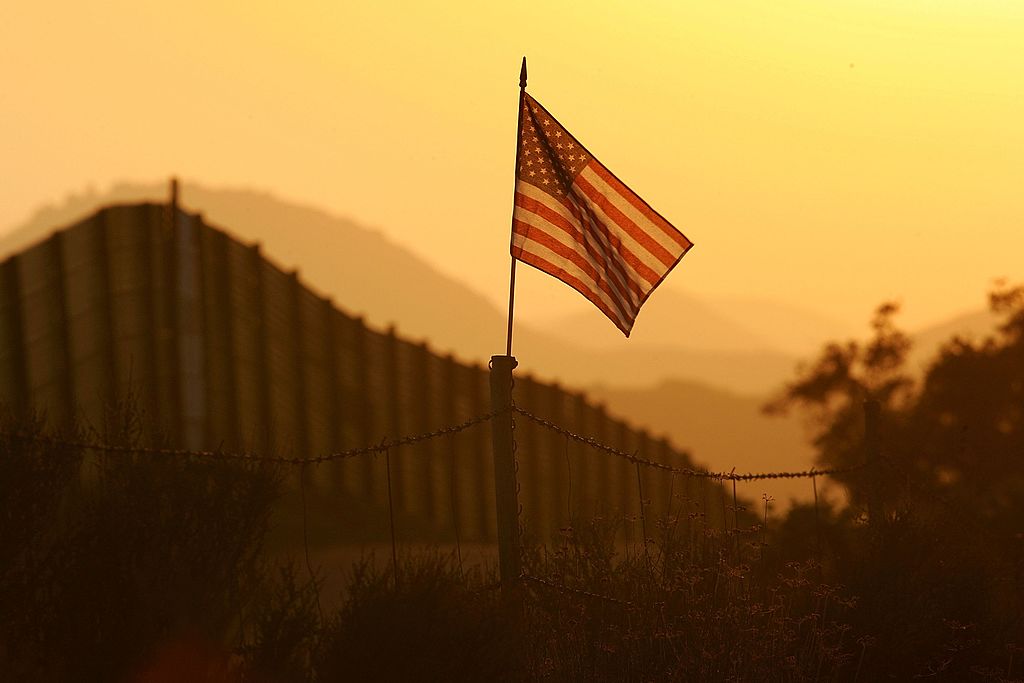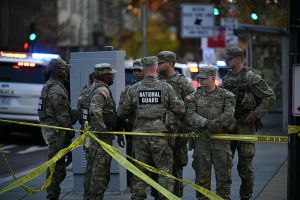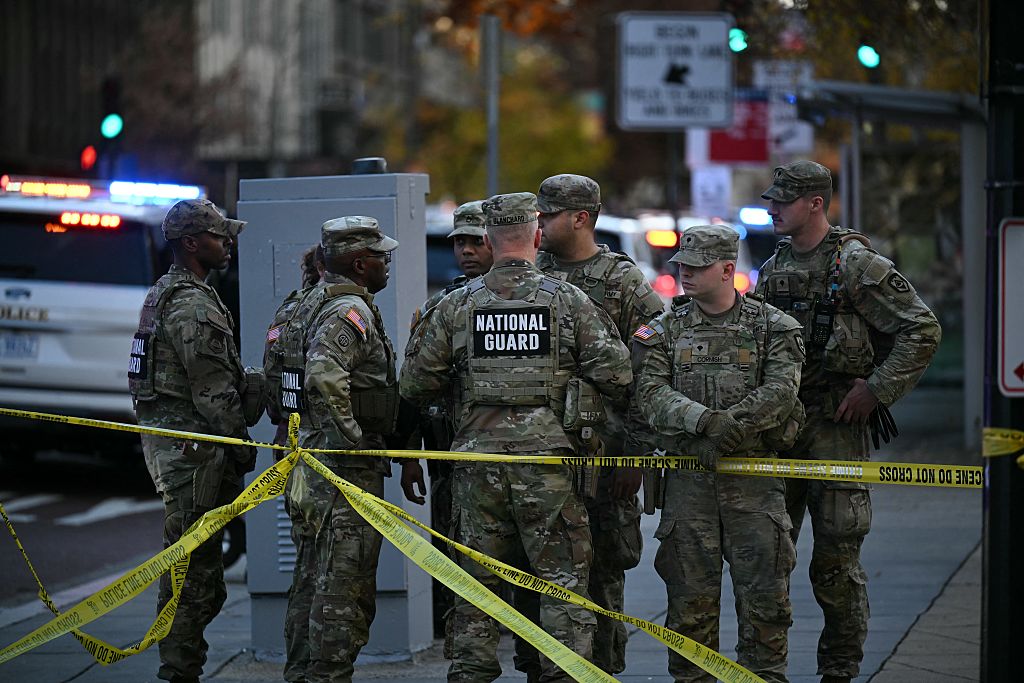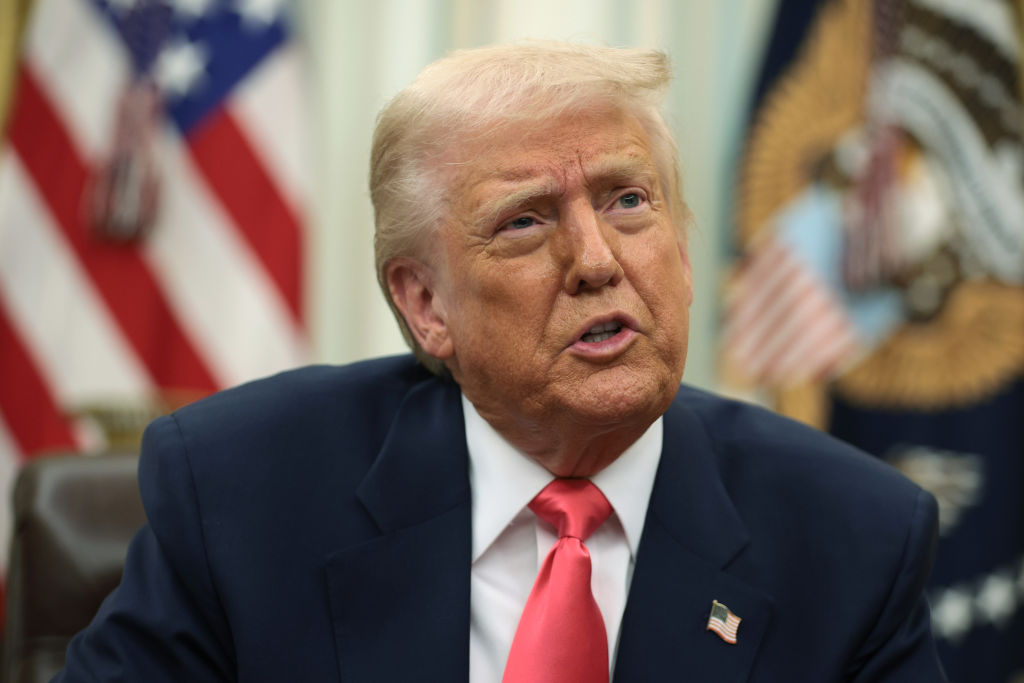Washington makes a fundamental error when it sees the present border crisis as an immigration problem, rather than the national security problem it has become under President Biden. For border states such as Texas, which bear the brunt of the situation, it’s also becoming a constitutional problem. In January, the US Supreme Court vacated an injunction prohibiting the feds from cutting razor wire that Texas had placed across a 2.5-mile stretch of border near the town of Eagle Pass. Governor Greg Abbott responded by asserting his state’s fundamental right to self-defense in the face of federal inaction, citing constitutional authority. The Texas governor was entirely correct — authority to defend and preserve the polity exists prior to process arguments about who will enforce federal immigration law.
Abbott’s dramatic move invoked a set of 2023 state laws that allow state and local authorities to arrest suspected illegal immigrants; he deployed the National Guard, state troopers and Texas Rangers to take control of Eagle Pass. The action captured the news cycle and snapped the border crisis into sharp relief, making illegal immigration the number one issue of the 2024 presidential election, seemingly overnight.
But there is one topic regarding border protection that even the most stalwart of governors cannot breach, a power reserved only for the federal government — and the only solution that will end the industrialized human trafficking operations that have enriched some Mexican criminal groups even more than the drug trade: we must go to war with the cartels, which profit handsomely from misery on both sides of the border.
To call what’s underway in Texas an “invasion” is not inapt. Since Biden took office in January 2021, more than 9 million illegal immigrants have been arrested at the southern US border, and an average of about 137,000 have entered the country every month. In late December 12,600 migrants were arrested in a single twenty-four-hour period, the highest single-day total ever recorded, breaking the previous record of 12,000 set two weeks before. By the end of the month, more than 300,000 migrants had been arrested crossing the border illegally, breaking all previous monthly records. Of course, those are just the migrants we know about. Steven Camarota of the Center for Immigration Studies estimates the number of so-called “got-aways” — illegal immigrants federal authorities observe entering the country illegally but are unable to apprehend — is, conservatively, close to 13 million.
Here’s the necessary thing to understand about the border crisis, which often seems impossible given its scale and complexity: every single person who crosses the border has been trafficked. No one fords the Rio Grande without paying a cartel or a Mexican official, or both, before setting a foot in the river. This is true of would-be asylum-seekers who cross in the open, often with children in tow, and of those who cross clandestinely in hopes of evading detection and arrest. (Indeed, the latter group pays considerably more, as it obviously requires more resources and manpower for the cartels and the smuggling rings they work with to get someone into the US undetected.)
The border crisis is being driven by the massive for-profit migrant trafficking operation conducted by Mexican criminal cartels in cooperation with elements of the Mexican state. Think of these cartels as multinational corporations such as Halliburton — if Halliburton were in the business of kidnapping and extortion, money laundering, manufacturing and distributing fentanyl and managing the logistics associated with ferrying 137,000 people a month into the United States.
The Department of Homeland Security estimated that cartel profits from migrant smuggling skyrocketed from $500 million in 2018 to an astounding $13 billion in 2022: that’s the difference between the value of the American pumpkin spice industry and the global brand value of Starbucks. And it’s likely a low estimate, given the opacity of the migrant black market and the steadily increasing volume of arrests at the border. Let’s say on average every migrant pays a cartel-affiliated smuggler $5,000 to cross the border (that’s on the low end). If an average of 137,000 migrants are arrested every month, that’s $685 million in monthly revenue — just for the migrants we know about.
A century ago, there was another kind of border crisis unfolding as Mexico’s civil war spilled over into the US. It culminated in General John J. Pershing’s Punitive Raid of 1916. America had already begun garrisoning soldiers in border towns in 1910, but the conflict took a turn when Pancho Villa’s militia killed eighteen people in New Mexico. Pershing’s cavalry crossed the Rio Grande and routed Villa’s forces, though the man himself escaped. President Woodrow Wilson was so impressed he tapped Pershing to lead America during World War One.
During that war, chemical warfare killed more than 1,400 soldiers under Pershing’s command. And America got off easy: Between 1914 and 1918, more than 90,000 soldiers died in clouds of mustard gas or phosgene or chlorine — a casualty rate so barbaric that the civilized world forswore the use of gas in war. In 2023, 112,000 Americans died by overdose.
Nearly all these deaths were caused by fentanyl supplied by China and trafficked across the border by Mexican cartels. In 2023, a single port in Belgium seized about twice the amount of cocaine as the entire American border; authorities encountered just ten grams of fentanyl. The same year the US Department of Homeland Security seized 43,000 pounds (19.5 million grams) of fentanyl. This is intentional chemical warfare with an annual death toll that is on par with the annihilation of Hiroshima and Nagasaki. Combined.
The question isn’t “why should America go to war with cartels?” It is “why haven’t we already?”
The phrase “securing the border” tends to suggest things we can do on our side, like completing the border wall, reforming our asylum system, hiring more Border Patrol agents. But none of that, at this point, will do much to deter the cartels from what has become a lucrative and booming business. It is no longer enough for the United States to return to the most effective — or as the press called them, “draconian” — measures taken by the Trump administration. Not when an enterprise as large as Starbucks is at stake. To stop it we have to expand our understanding to include securing both sides of the border. That will mean treating the cartels like terrorist organizations, and then making war on them.
And that will mean unilateral US intervention in Mexico. What would such intervention look like? The US must treat cartel-controlled territory — which includes much of northern Mexico at this point — no differently than Fallujah. Take, for example, the US response to the cartel massacre of three women and six children (the youngest a pair of eight-month-old twins) in November 2019, in the Sonoran Desert about seventy miles from the US border. The victims held dual US-Mexican citizenship, and were members of the extended LeBarón family, a community of fundamentalist Mormons that first settled in the Chihuahua desert in the 1920s. President Trump threatened to “wage war” on the cartels and “wipe them off the face of the earth,” but his administration did practically nothing. What should he have done? He should have launched a punitive operation against all cartels operating in the area.
This means boots on the ground for quick lethal strikes. Fort Huachuca in Arizona and Fort Bliss in Texas are provisioned with enough men and material to launch a short, sharp operation inside Mexico. Armed and unarmed drone operations would assume control of Mexican airspace; the US Navy would establish control off the Mexican coasts for monitoring and interdiction, and the US Army would be in charge of border movement.
Cartels may outgun local constabularies, but they stand little chance in open confrontation with the American military — particularly one armed with clear rules of engagement and no pretense of nation-building.
Speaking broadly, a unilateral US operation in this area would require establishing control of the airspace from Nogales, Arizona, 175 miles south to Hermosillo, Sonora, and from El Paso-Juárez to Chihuahua, about 230 miles south. Within this box, US forces would establish a no-fly zone to detect and confront any interference by cartel-linked paramilitary forces. Or the Mexican military.
Make no mistake, the Mexican Army and security services are extensions of cartel power. That once meant a senior officer on the take (Genaro García Luna, the equivalent of Mexico’s FBI director, is now in federal prison for taking millions in bribes from the Sinaloa cartel). Since 2018, under Mexican president Andrés Manuel López Obrador, popularly known as AMLO, the connections between organized crime and government have deepened. During the June 2021 elections in the state of Sinaloa, the cartel effectively shut down every other political party’s get-out-the-vote operations on election day by “detaining” (that is, kidnapping) hundreds of campaign workers — canvassers, phone-bank workers, poll watchers, election officials — except those working for López Obrador’s Morena Party, leaving it the only one in the field.
The predictable result was a resounding victory for López Obrador’s left-populist coalition and a defeat of the PRI, the old autocratic party that ruled in Mexico for much of the last century. Under these circumstances, the line between cartel and state becomes blurred. Christopher Landau, Trump’s ambassador to Mexico, has asserted that vast swaths of Mexican territory are now controlled by cartels. In 2021, Landau estimated, as much as 40 percent of Mexico was under cartel rule. And we’re not talking merely about roadblocks but established local and state political machines, industries, commerce and territory — all controlled by cartels.
Our leaders must confront the fact that the Mexican state (as distinct from the Mexican people) is now an open antagonist of the United States, in partnership with the cartels. Mexican officialdom should be made to understand that if the federal government refuses to impose sovereignty over its territory (ceding it, in whole or in part, to the cartels) then the United States Armed Forces will impose control on it as a necessary security measure. There are good elements of Mexican security forces, but they are buried beneath layer upon layer of corruption and fear. Striking the cartels directly — and their leaders in the National Guard and military — will no doubt reveal where there are reliable elements and leaders within state security forces. A strategic, localized assault on cartel-land is the catalyst necessary to loose the Mexican state from the snares of cartel influence, to force the Mexican national guard and military to reassert themselves as a bulwark against lawless narco-terrorists.
This isn’t a call for war with Mexico, but a frank acknowledgment that if we ever want to wrest control of our southern border from the cartels that now profit from illegal immigration, we’re going to have to fight them. For more than a century we have deployed our military all over the world to secure US interests, no matter how ill-defined or peripheral. The border crisis is not ill-defined or peripheral; it goes to the heart of what governments and militaries are for. Are we to accept the notion that American troops should be sent to fight jihadist groups in Africa and the Middle East but not deployed to impose control on our 2,000-mile border with Mexico, even in the face of a hostile foreign power purposely encouraging — and profiting from — illegal immigration and chemical warfare against our citizenry? Whatever national interests we have overseas, none compares to the immediate interests we have along the US-Mexico border. And those interests — from overwhelmed border states to the fentanyl-ravaged interior of the country — require nothing less than war.
This article was originally published in The Spectator’s June 2024 World edition.


























Leave a Reply